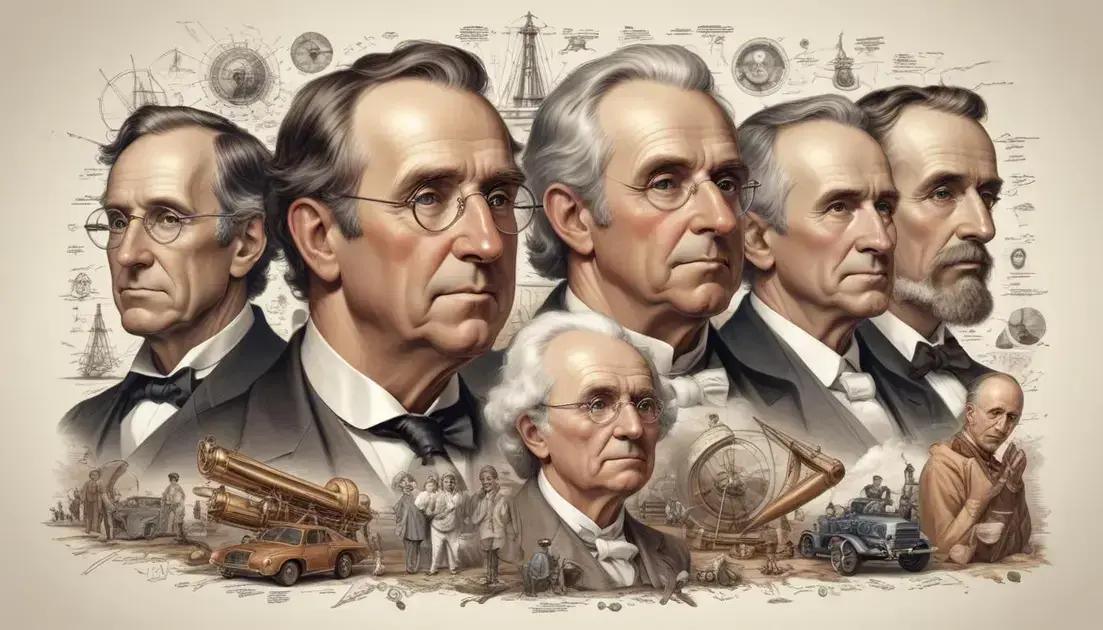
Violet Jessop: The “Unsinkable Lady” of the Titanic, Britannic and Olympic
Violet Jessop, known as the “Unsinkable Lady,” survived three famous maritime disasters: the Titanic, Olympic, and Britannic. Her experiences showcased remarkable bravery, as she helped save others during these tragic events. Jessop’s legacy emphasizes the importance of courage and compassion in dire situations, inspiring many with her story of resilience and strength.
Have you heard about Violet Jessop? This incredible woman was known for her unbelievable survival story during three maritime disasters. Her journey is nothing short of remarkable!
Introduction to Violet Jessop’s extraordinary life
Violet Jessop was born in 1887 in Argentina. She faced many challenges in her early life. However, this didn’t stop her from becoming a stewardess on some of the most famous ships, including the Titanic.
Violet began working for the White Star Line at a young age. Her first ship was the RMS Majestic. Soon after, she moved on to the RMS Olympic, where her incredible story began to unfold.
In 1911, the Olympic collided with another ship. Violet was on board and helped passengers during the chaos. Fortunately, there were no serious injuries. This was just the beginning of her remarkable journey.
The next year, she boarded the Titanic. Everyone knows the tragic story of its sinking in 1912. Violet was one of the few survived. She helped many people into lifeboats and ensured they were safe.
But Violet’s luck didn’t end there. In 1916, she was on the HMHS Britannic when it sank. Remarkably, she survived again by jumping into the sea. Her courage and quick thinking saved her life multiple times.
Her experiences made her famous. People began to call her the “Unsinkable Lady.” Violet’s life was full of adventure and survival against all odds. Her incredible tale continues to inspire many today.
The collision of RMS Olympic in 1911
In 1911, the RMS Olympic was on its maiden voyage. This ship was the largest passenger liner at that time. It was a proud moment for the White Star Line.
However, disaster struck during a routine trip. On September 20, the Olympic collided with the HMS Hawke. The two ships crashed in the Solent, near England.
The Olympic suffered severe damage. A large hole was torn into its side. Water rushed in quickly. Fortunately, the crew acted fast. They managed to keep the ship afloat.
This accident led to a series of headlines and concerns. Many people were worried about safety on large ships. The press dubbed it a disaster. But thankfully, there were no serious injuries or deaths.
Violet Jessop was serving as a stewardess on the Olympic. She showed incredible bravery during the collision. Violet helped passengers stay calm and safe. Her quick thinking helped many people.
The collision changed the way the White Star Line operated. They took safety more seriously after that. Over time, they worked hard to improve their ships’ safety features.
Despite the accident, the Olympic was repaired and returned to service. It had a long career after this incident, making many successful voyages.
The Titanic disaster in 1912
The Titanic disaster occurred on April 15, 1912. This event shook the world and changed maritime history forever. The Titanic was called the “unsinkable ship” because of its advanced technology.
On its maiden voyage, the Titanic set sail from Southampton to New York City. Excitement filled the air. Passengers looked forward to a luxurious journey.
However, on a cold night, tragedy struck. The ship struck an iceberg around 11:40 PM. It caused a massive gash in the ship’s hull.
Panic spread among the passengers. Even with safety measures, there weren’t enough lifeboats for everyone. Many people didn’t make it into a boat.
Violet Jessop was on board during the sinking. As a stewardess, she played a crucial role. She helped many passengers find their way to lifeboats. Violet’s courage and quick thinking saved lives.
The Titanic sank in just over two hours. Many lives were lost that night, making it one of the deadliest maritime disasters. Over 1,500 people died in the freezing waters of the Atlantic.
The news of the disaster traveled fast. The world was in shock. It led to significant changes in safety regulations for ships. The tragedy of the Titanic is still remembered today.
Surviving the HMHS Britannic in 1916
In 1916, Violet Jessop found herself onboard the HMHS Britannic. This ship was a hospital ship during World War I. It was the sister ship to the Titanic and Olympic.
On November 21, the Britannic was sailing in the Aegean Sea. Violet was working as a stewardess, serving the wounded soldiers. The atmosphere on board was tense but hopeful.
Suddenly, an explosion rocked the ship. It struck a mine, causing panic among the crew and passengers. The ship began to list to one side as water flooded in.
Violet remembered her experiences from the Titanic. She acted quickly to help others. She guided passengers to the lifeboats, urging them to stay calm.
However, the chaos proved challenging. The lifeboats were not enough for everyone. Many people were scared, but Violet’s bravery shone through. She managed to get into a lifeboat herself.
As they lowered into the water, she saw the Britannic sinking. It went under in just 55 minutes. Violet’s heart raced, but she didn’t panic. Getting to safety was her main focus.
After the rescue, Violet’s incredible tale spread. She survived another sinking of a large ship. Her courage and quick thinking saved her life and many others.
Exploring her legacy and significance
Violet Jessop left an incredible legacy. She survived not one, but three maritime disasters. Her experiences on the Titanic, Olympic, and Britannic amazed many.
Violet’s courage and strength inspire people today. Many admire her for staying calm during chaos. She helped others when they needed it most. Her actions showed true bravery and selflessness.
After her incredible experiences, Violet continued her work as a stewardess. She shared her stories and helped improve safety regulations. Her accounts taught the importance of safety on ships.
Violet’s life reminds us of the human spirit’s resilience. Even in the worst situations, individuals can show strength. She became known as the “Unsinkable Lady” for good reason.
Today, Violet Jessop is remembered in history. Her contributions to maritime safety are significant. She has inspired movies and books about her life, spreading her story worldwide.
Violet’s legacy is not just about surviving disasters. It’s about how we face challenges. She showed us to be brave, caring, and supportive to others. Her story continues to inspire future generations.
Conclusion
In conclusion, Violet Jessop’s incredible story highlights the strength of the human spirit. Surviving multiple maritime disasters, she became a symbol of courage and resilience. Her experiences aboard the Titanic, Olympic, and Britannic remind us of the importance of bravery in difficult times.
Violet’s legacy goes beyond just survival. She helped improve maritime safety and showed how one person’s actions can inspire many. Today, she is celebrated as the “Unsinkable Lady.” Her story encourages us to face challenges head-on and support others when they need it most.
By remembering Violet Jessop, we learn valuable lessons about courage, compassion, and the importance of helping others. Her life continues to inspire people around the world, proving that even in the darkest moments, hope and strength can shine through.


